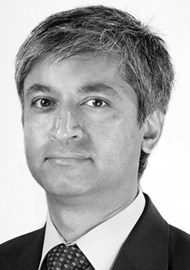Chordomas are generally slow growing and are histologically considered low grade tumours. Their high recurrence rate even after postoperative radiation renders them difficult to treat. This is particularly true for clival chordomas whose deep anatomic location and proximity to vital anatomic structures makes surgical resection challenging. This paper retrospectively reviews 50 patients over a 20 year period treated at the Centre for Minimally Invasive Skull Base Surgery in San Francisco. Thirty-four of the cases had a transphenoidal approach. Other approaches included trans-oral, craniotomy and staged approaches. Post-operative radiation included 19 cases of proton beam, seven with cyber knife, six with intensity modulated radiation therapy and 10 with external beam. At last follow-up 23 / 47 patients remained disease free or had stable residual tumour. As expected, gross tumour removal reduced chordoma recurrence. The lower third of the clivus frequently harboured residual or recurrent tumour despite staged approaches. Several investigators advocate proton beam radiation because its sharp dosimetry decline at the tumour edge minimises the radiation dose to which the surrounding normal structures are subjected. This paper found no benefit of proton based over photon based radiation, contradicting conventional presumptions.
Clival chordoma recurrence
Reviewed by Showkat Mirza
Factors predicting recurrence after resection of clival chordoma using variable surgical approaches and radiation modalities.
CONTRIBUTOR
Showkat Mirza
FRCS, Department of Otorhinolaryngology-Head & Neck Surgery, Sheffield Teaching Hospitals, South Yorkshire, UK.
View Full Profile



